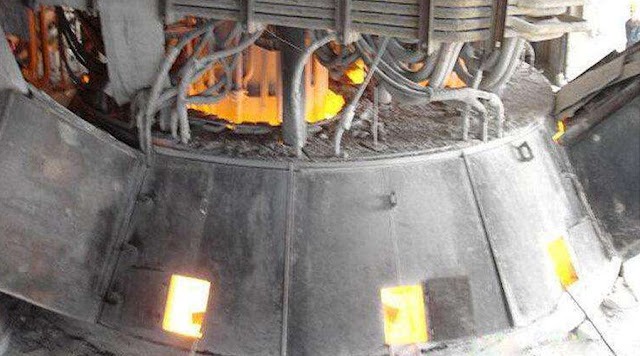What is a Submerged Arc Furnace?
Submerged arc furnace is a special smelting furnace used in the metallurgical industry to produce various metals and alloys. Its unique submerged arc technology provides efficient heating and precise control of the melting process.
SAF has the advantages of high energy efficiency, high production capacity, flexibility and excellent product quality. Despite high initial investment and maintenance costs, submersible furnaces remain an important tool for metals and alloy production, contributing to various industrial sectors.
Next, let us learn more about the submersible furnace.
What Is A Submerged Arc Furnace?
1) Submerged arc furnaces is a kind of equipment used to reduce smelting ores, carbonaceous reducing agents and solvents and other raw materials. It mainly produces ferrous alloys such as ferrosilicon, ferromanganese, ferrochromium, ferrotungsten and silicon-manganese alloy. Its an important equipment in the metallurgical industry. Industrial raw materials and chemical raw materials such as calcium carbide.
2) The submerged arc furnace uses carbon or magnesia refractory materials as the furnace lining, uses self-baking electrodes, and uses three self-baking electrodes to heat the charge, reduce the metal elements from the oxide ore and smelt them, and the temperature in the furnace The highest temperature can reach 2000~3000℃
3) The uniqueness of SAF is its submerged arc technology, which provides efficient heating and chemical reactions.
A submerged arc furnace consists of a refractory-lined steel shell housing three electrodes. These electrodes are immersed in the furnace charge, which is usually a mixture of raw materials such as ores, fluxes and reducing agents. The charge is fed into the furnace through the charging system and heated by the resistance generated by the electrodes.
The smelting process in SAF involves a series of chemical reactions that lead to the reduction of metal oxides and the formation of the desired alloy. The heat generated by the electrode melts the charge, and the reducing agent reacts with the metal oxide to produce molten metal. The molten metal is then discharged from the furnace through a taphole located at the bottom of the furnace.
One of the main advantages of submerged arc furnaces is their high energy efficiency.
Submerged arc technology allows precise control of heat input, reducing energy consumption compared to other melting methods. Additionally, using electricity instead of fossil fuels makes SAF a more environmentally friendly option.
SAF also offers high production capacity and flexibility. Its large size and continuous operation allow the melting of large quantities of materials, making it suitable for industrial-scale production. In addition, SAF can process a variety of raw materials and is able to produce various alloys with different compositions.
In addition, submersible furnaces deliver superior product quality and purity. The controlled environment within the furnace minimizes the loss of volatile elements and impurities, resulting in the production of high-quality metals and alloys. Precise control of the smelting process also allows the alloy composition to be tailored to meet specific customer requirements.
However, submerged arc furnace do have some limitations. Due to its complex design and complex control system, it requires a large initial investment. Additionally, furnaces are expensive to maintain and operate, requiring skilled personnel and regular maintenance inspections.
Through the above we have a certain understanding of what is a submerged arc furnace. As a smelting equipment that is growing in metal smelting, it has certain advantages and practicality. Choosing high-quality products and manufacturers with warranty is also a top priority.
If you have any questions or needs about SAF, EAF, LF, IF, CCM and other melting furnaces, please feel free to contact us at HANI.
E-mail: saleswn@hanrm.com / inquiry66@hanmetallurgy.com (Daisy Zhai)
Tel / Whatsapp / Wechat: 0086 17791213533
Xi'an Hani Tech Co., Ltd.



Comments
Post a Comment